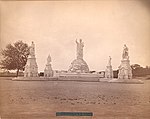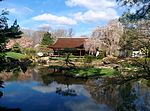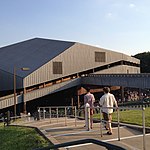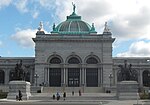Ohio House (Philadelphia)

The Ohio House, or Ohio State Building, is a historic building located in west Fairmount Park, Philadelphia. The house was built from various Ohio sandstones and functioned as the Ohio state exhibit for the Centennial Exposition of 1876. The only other extant exposition structures are Memorial Hall and two small comfort stations; the building is the only extant state exhibit remaining from the exposition. The house was restored for the Bicentennial Celebration in 1976, and leased to Ohio House Partners by the Fairmount Park Historic Preservation Trust in 2006. After extensive restoration, the building was opened to the public in November 2007 and has since functioned as a cafe, event venue and offices.The Ohio House is listed on the Philadelphia Register of Historic Places and is an inventoried structure within the Fairmount Park Historic District entry on the National Register of Historic Places.
Excerpt from the Wikipedia article Ohio House (Philadelphia) (License: CC BY-SA 3.0, Authors, Images).Ohio House (Philadelphia)
Horticultural Drive, Philadelphia
Geographical coordinates (GPS) Address External links Nearby Places Show on map
Geographical coordinates (GPS)
| Latitude | Longitude |
|---|---|
| N 39.984997 ° | E -75.216176 ° |
Address
Ohio House (Ohio State Building)
Horticultural Drive
19131 Philadelphia
Pennsylvania, United States
Open on Google Maps










